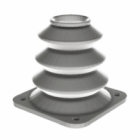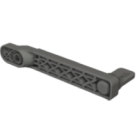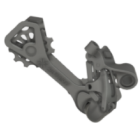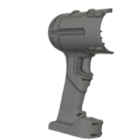3D optimization software
Modern additive manufacturing isn’t just about printing complex shapes — it’s about printing them smarter. 3D optimization software plays a critical role in refining designs, reducing material usage, and improving print outcomes. These tools sit at the intersection of design, engineering, and simulation, helping users go beyond visual geometry to functional, efficient, and production-ready models.
Whether you’re printing prototypes or end-use parts, optimization software helps ensure that your part performs as intended while making the best use of the technology’s strengths.
What is 3D optimization software and how does it work?
3D optimization software analyzes a digital model and automatically improves certain aspects of its geometry or performance. This may include:
- topology optimization – removing unnecessary material while preserving structural integrity
- lattice generation – replacing solid volumes with lightweight internal structures
- support optimization – reducing or repositioning support material for efficiency
- orientation analysis – determining the best angle to print a part based on strength, surface quality, or time,
- build volume packing – arranging multiple parts to maximize efficiency in multi-object prints
These processes are often automated or semi-automated, making it possible to evaluate multiple variations quickly — which is particularly useful in production environments.
Why use 3D optimization software in additive manufacturing?
Unlike traditional manufacturing, where you often have to adapt the design to the tooling, additive manufacturing allows you to optimize the part for performance and printability from the beginning. That makes 3D optimization software essential when working with complex geometries, lightweight structures, or expensive materials.
By reducing mass without sacrificing strength, minimizing supports, or fine-tuning orientation, engineers can achieve better results in less time and with less waste. This is especially valuable in sectors like aerospace, automotive, medical, and performance product design.
Top 3D optimization software tools for efficient 3D printing
Several software platforms are commonly used to optimize 3D printed models:
- Autodesk Netfabb – Offers topology optimization, support tuning, and build prep tools,
- nTopology – Known for generative design and advanced lattice structures,
- Materialise 3-matic – Used for lightweighting, mesh cleanup, and surface texturing,
- Altair Inspire – Provides physics-based optimization and manufacturing constraints,
- ParaMatters CogniCAD – Focuses on structural optimization with high automation,
- Magics SG+ – Optimizes support strategies for complex metal builds.
Each tool varies in approach, but the goal is the same: to produce parts that are lighter, faster to print, and better tailored to their function.
When and why to use 3D optimization software in your workflow
You don’t need to optimize every part you print — but when performance, weight, cost, or material efficiency matter, optimization software becomes a powerful asset. It’s especially useful for:
- parts that require high strength-to-weight ratios,
- models with thermal or mechanical load requirements,
- situations where build time and material cost need to be minimized,
- printing multiple parts efficiently in a single build chamber.
Incorporating optimization early in the design process can also help avoid costly redesigns or failed builds later in production.
Explore also
- What software do 3D printers use
- CAD software for 3D printing
- 3D print slicer programs
- 3D printing simulation software
- Open source vs proprietary software
Related categories
 Austria
Austria  Bosnia and Herzegovina
Bosnia and Herzegovina  Bulgaria
Bulgaria  Croatia
Croatia  Czech Republic
Czech Republic  Denmark
Denmark  Estonia
Estonia  Finland
Finland  France
France  Germany
Germany  Greece
Greece  Hungary
Hungary  Ireland
Ireland  Italy
Italy  Latvia
Latvia  Lithuania
Lithuania  Poland
Poland  Portugal
Portugal  Romania
Romania  Slovakia
Slovakia  Slovenia
Slovenia  Spain
Spain  Sweden
Sweden  Switzerland
Switzerland  United Kingdom
United Kingdom  Ukraine
Ukraine  China
China  Hong Kong
Hong Kong  India
India  Israel
Israel  Japan
Japan  Malaysia
Malaysia  Philippines
Philippines  Saudi Arabia
Saudi Arabia  South Korea
South Korea  Taiwan
Taiwan  Thailand
Thailand  Turkey
Turkey  United Arab Emirates
United Arab Emirates  Egypt
Egypt  South Africa
South Africa  Tunisia
Tunisia  Canada
Canada  Mexico
Mexico  United States
United States  Brasil
Brasil  Colombia
Colombia  Australia
Australia  New Zealand
New Zealand 












